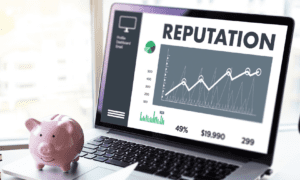People who buy felt covers for chair legs to prevent scratching the floor make good borrowers – such customers will never miss their payments. But one must be more careful with those who visit stores selling cheap car parts and accessories. Sooner or later they will fall behind in their loan payments. Credit card companies have long been using customer data to predict behaviour. But data from social media is now just as useful for determining loan eligibility.
People tend to be careful when sharing their thoughts and behaviours with those around them but on social media they are completely vulnerable to their subconscious. By liking a news story or photo, impulsively joining a group or adding a song to a playlist, a user can reveal much more about themselves than they would share with their closest friends and relatives. This includes both their consumer preferences and payment discipline. No one can deny that those subscribing to a Bloomberg page on social media are more careful about their finances than fans of high stakes poker. Indeed, a computer is a better judge of an individual’s personality based on dozens of likes than a close relative according to the Financial Times, citing a study conducted by researchers at Cambridge and Stanford Universities.
Sberbank plans to introduce a psychometric scoring system based on analyses of social media data. More flexible and tech-savvy companies from the financial technology industry have been using this data for some time. For example, ID Finance uses a system built on ranking borrowers and, thanks to that system, it is able to provide more tailored offers to its customers.
How social rating works
Social rating (customer scoring) works in two ways: identification of fraudsters among borrowers (fraud scoring) and evaluation of possible default by the customer. Fraud scoring responds to all possible inconsistencies in a user profile. Say a borrower is aged 35 and the average age of their friends on social media is about 20 – this would be reason to take a closer look. Similarly if a profile page has only existed for two months and already has hundreds of posts. Or if the geo tags on most of the photos don’t correspond with the city of residence indicated on the application form, the borrower most likely lied when filling the form. If several such factors don’t match, you are most likely dealing with a fraudster.
To evaluate possible default by a debtor, the system analyses qualitative data including groups the user subscribes to. For instance: “How to cheat a bank”, “How to avoid paying rent”, “Prison romance” – these are all bad signs for a credit company. Having well-off friends, visits to high-end restaurants and photos from holidays abroad are far more encouraging signals. Social media can help borrowers: in a traditional application form they can provide only their official income, which won’t include income from leasing out property, money from hobbies or the financial benefits of having a wealthy partner. However, all this information can be seen on a social media profile. The data analysed on these two criteria are merged into a single score on a scale of 1 to 100. If a user gets a score of 80, the probability of payment is high.
Who can benefit from the right account
There are still many people around the world without a credit history – the basic tool for traditional scoring. As a result they are often refused credit or charged a higher interest rate for a loan. By maintaining an active social media account, people are more likely to be eligible for a loan and will benefit from lower interest rates. So if you’re looking to bring down the rate you pay on loans then be sure to post your holiday snaps on Facebook.
By Irina Khoroshko, data scientist at ID Finance

















































